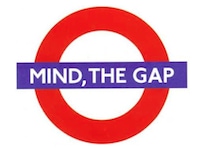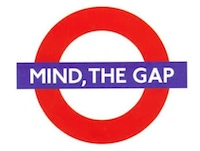It was quite the line up at the recent IASP conference: Tracey, Apkarian, Flor, Crombez, Iannetti, Moseley …the groupies were gathering around a melting pot of pain-full ideas.
One such thought provoking notion was the search for “the ‘hurt’ in the brain”, in association with a staunch refuting of the use of the ‘pain signature’ label- a cardinal sin in the Pain Imaging Neuroscience Group, directed by Professor Irene Tracey at Oxford University.
 Professor Tracey’s fascinating talk left me thinking how the use of language can be both powerful and limiting; we like to label ‘things’ but this becomes tricky when the ‘things’ that we are trying to label aren’t necessarily ‘things’ in the objective sense. The feelings we have, our perceptions, the qualia are open to a plethora of interpretations that can find themselves awkwardly grouped under broad umbrellas. Yet, without the structure of labels and language we would be lost.
Professor Tracey’s fascinating talk left me thinking how the use of language can be both powerful and limiting; we like to label ‘things’ but this becomes tricky when the ‘things’ that we are trying to label aren’t necessarily ‘things’ in the objective sense. The feelings we have, our perceptions, the qualia are open to a plethora of interpretations that can find themselves awkwardly grouped under broad umbrellas. Yet, without the structure of labels and language we would be lost.
Brain imaging has allowed us to take leaps and bounds in our understanding of the way our nervous system interacts, labelling specific regions in association with particular experiences that we have. As such, the ‘pain matrix’ (all the labels are coming out, the gloves are off) has evolved along with our understanding of what our brains might look like when we experience pain. A case in point for the Apkarian lab who has recently published a study, highlighting important connections in the brain associated with the development of chronic pain. The search is already underway- so where is this ‘hurt’ in the brain? And if found, are all our problems solved?
Hold fire….this may not be the only quest worth pursuing.
Experiences are unique to the individual and pain is one such experience. The depth and breadth of our nervous system, immune system and endocrine system allow for innumerate communications and possibilities that could constitute someone being in pain. By labelling the ‘hurt’ in the brain we may run the risk of reducing our perceptions to a component part of the whole.
We rely on verbal communication and behaviour to convey our experiences, yet despite the sophistication of language it is still a crude representation of the multisystem communications behind it. Brain imaging offers a fantastic insight into these communications, but it too can be considered a crude tool in relation to understanding the person as a whole. It is thus with great caution that I believe we must proceed in our interpretation of the ‘hurt’ in the brain; the implications could be great, both to the person in pain and society at large.
The brain is edgy; it offers that final frontier, a place where information from the outside is interpreted into individual qualia. There is no denying that our brains set us apart from other species: we socialise, change beliefs, embrace culture in a uniquely human way, it is therefore paramount to explore the intricacies of the brain dynamics in order to understand our experiences. In the same breath, however, if we look at one component too closely, are we in danger of neglecting the whole?
Put simply, no matter how snazzy our scanners get, it is still the person that hurts not the brain.
Abby Tabor
 Abby has a very posh English accent, and clearly doesn’t like granola bars. What brought Abby out to Oz? Abby first got an inkling for what pain really was after listening to Mick Thacker during her undergraduate degree at King’s College London. It was his inspiration, along with a certain Moseley style Explain Pain experience that led her to the other side of the world to delve deeper into the world of pain.
Abby has a very posh English accent, and clearly doesn’t like granola bars. What brought Abby out to Oz? Abby first got an inkling for what pain really was after listening to Mick Thacker during her undergraduate degree at King’s College London. It was his inspiration, along with a certain Moseley style Explain Pain experience that led her to the other side of the world to delve deeper into the world of pain.
She finally agreed to return to the UK, on one condition, that they would let her come back to the land down under to do part of her PhD. Still in the early days of research she is nurturing a nice little coffee habit and asking a lot about how philosophy can fit into our understanding of pain. Here is Abby talking more about what she does.



